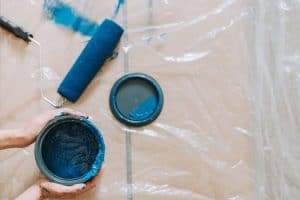Acrylic Polymers in the Healthcare Industry

Acrylic polymer, derived from the monomer methyl methacrylate (MMA), was first developed more than 60 years ago. Since then, formulations have extended the material’s performance range, resulting in varying levels of melt flow, impact resistance, colorability, gamma recovery, and other controlled characteristics. General-purpose acrylic grades contain a comonomer, added during the polymerization process, to facilitate flow during injection molding and extrusion. Specialty grades are formulated to perform in applications requiring high impact strength and heat resistance. UV-light-transmitting formulations are also available, and are specified for certain critical diagnostic equipment in which even slight UV absorption or variation in material flow could be detrimental.
Easily processed and assembled, acrylic has been used in medical and health-care applications since its introduction. One of the first uses of acrylic sheet was for incubators. The first intraocular acrylic prosthesis was implanted in 1955, and ever since acrylic has been used in contact with human tissue. Its biocompatibility led to the adoption of acrylic for aircraft canopies during World War II: pilots suffered fewer infections from shards of acrylic than they had from glass.
The leading applications of acrylic in the medical industry today are for cuvettes and tubing connectors, but it is also used to produce test kits, syringes, luers, blood filters, and drainage wands as well as flowmeters, blood-pump housings, fluid silos, surgical-blade dispensers, incubators, and surgical trays. Acrylic polymers are resistant to many biological and chemical agents. Medical grades of acrylic have passed USP Class VI biological testing procedures and comply with FDA regulation 21 CFR 177.1010.
The use of acrylic polymers in the medical industry has been steadily increasing over the past several years. This is especially noticeable in the area of diagnostics, due to the fact that acrylic is an inert material that does not react with the reagents used in testing. For medical devices, special impact-modified grades formulated to resist breaking and cracking are employed more often than standard grades.
Physical Properties of Acrylic
Acrylic offers light transmittance of 92%–theoretically the maximum obtainable–with particular clarity at lower wavelengths of 270 to 350 nm. For example, acrylic is the material of choice for disposable cuvettes, used to contain blood and other fluids, through which a spectrum of UV light is passed for analysis. Although quartz glass can be used for the most demanding applications, since it transmits light as low as 220 nm, it is not cost-effective in an application that increasingly favors disposable plastics.
Other prominent physical properties of acrylic include good mechanical strength and dimensional stability, along with high tensile and flexural strength. Medical-grade acrylic can be supplied for intricate, thin-wall applications in which maximum optical clarity is required: it offers excellent injection molding flow properties (13 g/10 min) and a tensile strength of 10,600 psi. Acrylic also provides good surface hardness for scratch resistance, an important quality in medical applications.
Because acrylic is a rigid material, standard grades do not provide high impact resistance. Therefore, impact-modified grades–softer and less rigid than standard formulations–are specified for applications that typically require increased toughness. Acrylic is not recommended for applications that demand very high impact resistance or those that put surfaces under high pressure. Acrylic does perform well in electrical applications, due to its insulating nature; an increase in absorbed moisture makes it more conductive.
As temperatures increase, acrylic becomes more flexible and exhibits less flexural strength. Under sustained loading, strain on the material can induce excessive molecular movement that increases with time under load and higher temperatures and results in the phenomenon known as creep that is common to all thermoplastics.
Polymethyl Methacrylate Manufacturer (PMMA)
Used in medical applications for many years, acrylic offers a number of advantages compared with other clear thermoplastic materials traditionally specified for diagnostic equipment and medical devices. Benefits include unsurpassed clarity, superior toughness, rapid gamma recovery, excellent UV-light transmittance, biocompatibility, and good chemical and scratch resistance. Acrylic is easily processed and assembled and offers the potential to be recycled back to its monomer and used again, an important property as the pressure to recycle increases.
Acrylic resin can be custom formulated to meet the requirements of a broad range of medical applications. Since it can be processed in molds designed for polycarbonate and other thermoplastics, manufacturers using those materials should consider trial runs with acrylic. Direct comparisons between parts molded with acrylic and with competing thermoplastics may reveal potential cost savings as well as unexpected side benefits such as improved surface finish, transparency, processing, and part performance. If you need acrylic polymers for any application in the healthcare or medical industries, contact Gellner Industrial today.



